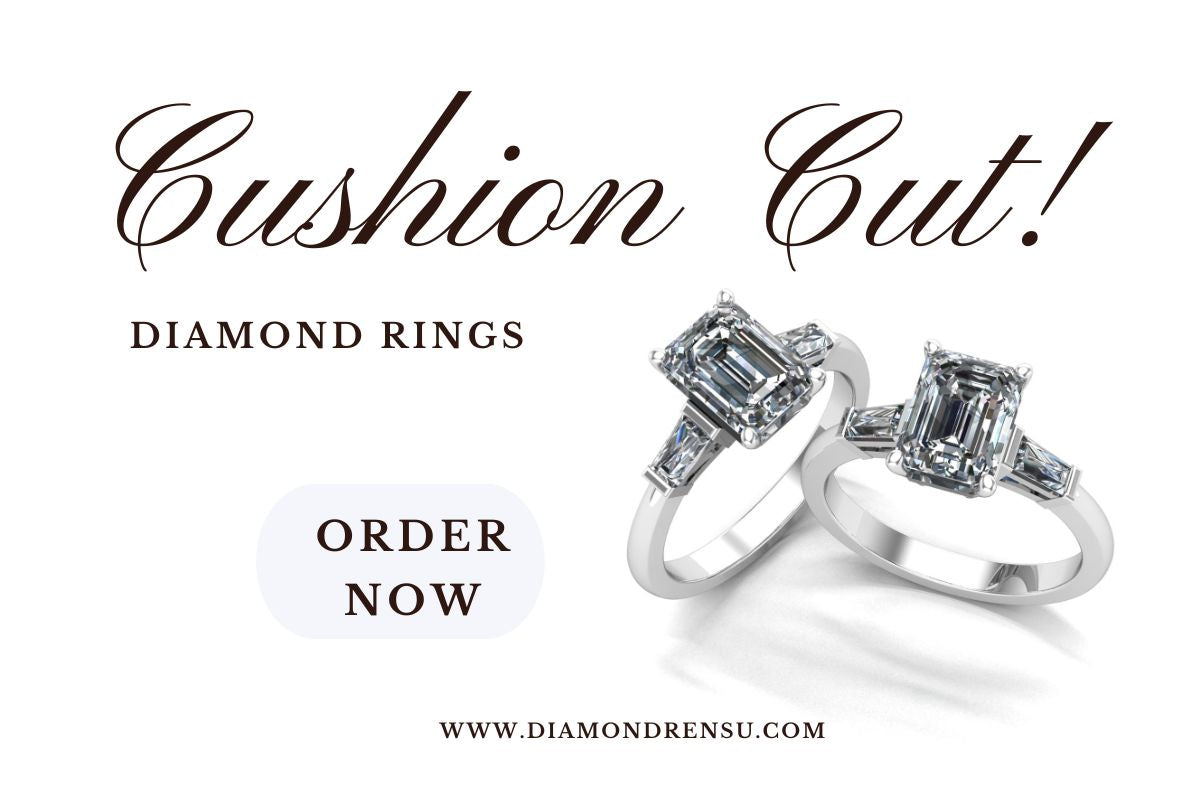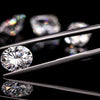
Cushion Brilliant vs Cushion Modified Brilliant: Understanding the Differences
In my exploration of the fascinating world of diamonds, I find the distinction between the cushion brilliant and the cushion modified brilliant particularly intriguing. The cushion brilliant, with its roots in the antique mine cut, embodies classic elegance. Its larger facets give rise to bold flashes of light, known in the industry as "fire," which contribute to its longstanding popularity. This cut's pillow-like silhouette is a favorite for those looking for both vintage allure and modern sophistication.
On the other hand, the cushion modified brilliant cut is a more contemporary permutation, offering a unique spin on the traditional appearance. This modification typically involves added facets and sometimes adjusted angles, resulting in what many describe as a "crushed ice" effect. The sparkling appearance of this cut is reminiscent of glistening water, appealing to those who desire a more intricate play of light within their diamond.
- Exploring Cushion Brilliant and Cushion Modified Brilliant
- Design Characteristics of Cushion Cuts
- Aesthetics and Visual Appeal
- Choosing the Right Cushion Cut Diamond
- Popularity and Cultural Significance
- Purchasing Considerations for Cushion Diamonds
- Customization and Styling with Cushion Cuts
- Analyzing Cushion Diamonds for Quality
- Insights into Personalization and Style
- The Cushion Cut in a Modern Context
- Conclusion
- Frequently Asked Questions
The choice between a cushion brilliant and a cushion modified brilliant often comes down to personal aesthetic preference. Some may prefer the pristine and clear faceting of the cushion brilliant, while others are captivated by the intricate light performance of the cushion modified brilliant. My knowledge unfolds a spectrum of nuances between these two styles, informing potential diamond owners of the subtle differences that dictate the overall appearance and character of their chosen gemstone.
Exploring Cushion Brilliant and Cushion Modified Brilliant
| Characteristic | Cushion Brilliant | Cushion Modified Brilliant |
|---|---|---|
| Shape | Square or rectangular with rounded corners | Square or rectangular with rounded corners |
| Facets | 58 facets | 64 facets or more |
| Brilliance | High brilliance and fire | Enhanced brilliance due to additional facets |
| Appearance | Classic and traditional | Modern and slightly more sparkling |
| Popularity | Traditional choice, widely used | Gaining popularity for its enhanced brilliance |
| Cost | Generally less expensive | May be slightly more expensive due to additional facets |
In this exploration, I'll cover the distinct characteristics and development of the cushion brilliant and cushion modified brilliant diamond cuts, which both offer unique sparkle and visual appeal to those seeking a cushion-shaped diamond.
Defining Cushion Brilliant and Cushion Modified Brilliant
Cushion Brilliant: This cut is known for its soft corners and larger facets which enhance the diamond's brilliance. It resembles the traditional round brilliant cut with its clear, distinct pattern of light and shadows when viewed from the top.
- Facets: The facets usually extend from the center of the stone to the girdle, creating a star-like pattern.
- Appeal: The larger facets contribute to a bolder sparkle and a classic aesthetic.
Cushion Modified Brilliant: This variant of the cushion cut features additional facets below the girdle, which alter the look of the diamond's sparkle.
- Facets: Pavilion mains are shorter, leading to a different sparkle that can mimic the appearance of glistening water known as the "crushed ice" effect.
- Sparkle: The modified brilliant generally offers a more shimmering, nuanced light return, which can enhance the perceived scintillation of the diamond.
Historical Evolution of Cushion Cuts
| Period | Description |
|---|---|
| 17th-18th Century | The cushion cut, also known as the "old mine cut" or "old European cut," emerged during this period. It featured a square or rectangular shape with rounded corners and large facets, reflecting the technology and taste of the time. |
| 19th Century | Advancements in gem cutting technology led to the refinement of cushion cuts with more precise faceting and proportions. The cushion cut became a popular choice for diamonds and colored gemstones, prized for its brilliance and fire. |
| 20th Century | The cushion cut continued to evolve with changing tastes and technological innovations. Variations such as the "cushion brilliant" emerged, featuring a higher number of smaller facets for increased brilliance and sparkle. |
| 21st Century | Modern cushion cuts combine traditional elegance with contemporary design elements and cutting techniques. Advanced computer modeling and precision cutting technologies allow for customization and optimization of cushion cut diamonds for maximum beauty and performance. |
Cushion cut diamonds, treasured for their timeless appeal and soft, rounded edges, have evolved significantly since their inception.
- Origins: The cushion cut has roots in the old mine cut, dating back over two centuries and was the de facto diamond shape until the early 20th century.
- Development: Over time, the desire for increased brilliance and the advancement of cutting technology led to the creation of the cushion brilliant and cushion modified brilliant cuts.
These cuts embraced both the historical significance of their predecessors and the modern craving for fire and scintillation in diamond cuts. Each iteration of the cushion cut diamonds reflects the changing tastes and technological advancements in gem cutting.
Design Characteristics of Cushion Cuts

In this section, I focus on the intricate details of the design characteristics that define cushion cut diamonds, particularly the classic cushion brilliant and the cushion modified brilliant. This includes their faceting pattern differences, the critical role of the pavilion and girdle, as well as the implications of additional facets in the modification of the classic design.
Faceting Patterns and Brilliance
The faceting patterns in cushion cuts are pivotal to the diamond's brilliance and fire. The classic cushion brilliant features larger facets, which enhance the stone’s ability to reflect light, creating distinct flashes of brilliance and a "flower shape" in their pattern. In contrast, the cushion modified brilliant often includes an extra row of facets on the pavilion, directly influencing the way light plays through the stone. This results in a different kind of sparkle, often compared to the appearance of glistening water or crushed ice.
The Role of the Pavilion and Girdle
In cushion cut diamonds, the pavilion and girdle play a central role in the diamond's overall appearance. The pavilion, with its four main facets, is a primary driver for the light reflection within the gem. The girdle, being the dividing line between the crown (top) and pavilion (bottom), influences the light return as well. The cushion brilliant typically has a pavilion that extends deeper with larger facets, while the cushion modified tends to have a shallower pavilion with additional facets.
Impact of Extra Facets on Cushion Modified Brilliant
The addition of extra facets in a cushion modified brilliant changes the way this diamond radiates light. By introducing additional facets below the girdle, the modified version typically showcases a more dazzling, albeit short-lived sparkle, making the facets resemble a "crushed ice" effect. This modification can influence both brilliance and fire, the colorful light dispersion seen in diamonds, causing the modified cushion cuts to display a different kind of light play compared to their cushion brilliant counterparts.
By dissecting these aspects, we gain an insight into the deliberate craftsmanship that goes into shaping both the cushion brilliant and cushion modified brilliant diamonds.
Aesthetics and Visual Appeal

When comparing cushion brilliant and cushion modified brilliant diamonds, the primary factors I consider are their sparkle and the overall shape. The way these diamonds reflect light and their proportions significantly influence their beauty and desirability.
Assessing Sparkle and Fire
Cushion Brilliant:
- Sparkle: Characterized by larger facets, cushion brilliants offer a classic look with a soft, romantic sparkle similar to that of round brilliants.
- Fire: These diamonds typically exhibit excellent fire, dispersing light into a spectrum of colors.
Cushion Modified Brilliant:
- Sparkle: Possessing extra facets and a distinctive crushed ice appearance, cushion modified brilliants can exhibit a more shimmering, dynamic light play.
- Fire: The modification in faceting may affect the dispersion of light, resulting in a unique sparkle compared to cushion brilliants.
Personal Preference: Ultimately, the choice between these two in terms of sparkle and fire comes down to personal preference. Some may prefer the traditional and subtle glow of cushion brilliants, while others may be drawn to the lively twinkle of cushion modified brilliants.
Comparison of Shape and Proportions
|
Cushion Brilliant |
Cushion Modified Brilliant |
|
|
Faceting |
Larger, fewer |
Additional, smaller |
|
Shape |
Often square |
Can be square or rectangular |
|
Length to Width |
Preference for a 1.00-1.09 ratio |
Preference for elongated shape with a 1.10-1.25 ratio |
Cushion Brilliant:
- These diamonds tend to have a classic square shape with rounded corners, though they can also be elongated.
- Preferred length to width ratios for those who favor a more traditional appearance generally fall between 1.00 to 1.09.
Cushion Modified Brilliant:
- They may appear more rectangular, appealing to those who value the elegance of an elongated diamond.
- These cuts often have a length to width ratio of 1.10 to 1.25, but individual preference should guide the final selection.
Clarity and Color: Both types of cushion cuts can vary broadly in color and clarity; thus, these should be considered alongside aesthetic aspects when selecting a diamond. A diamond's shape and faceting should complement its clarity and color, ensuring a harmonious appearance.
Choosing the Right Cushion Cut Diamond
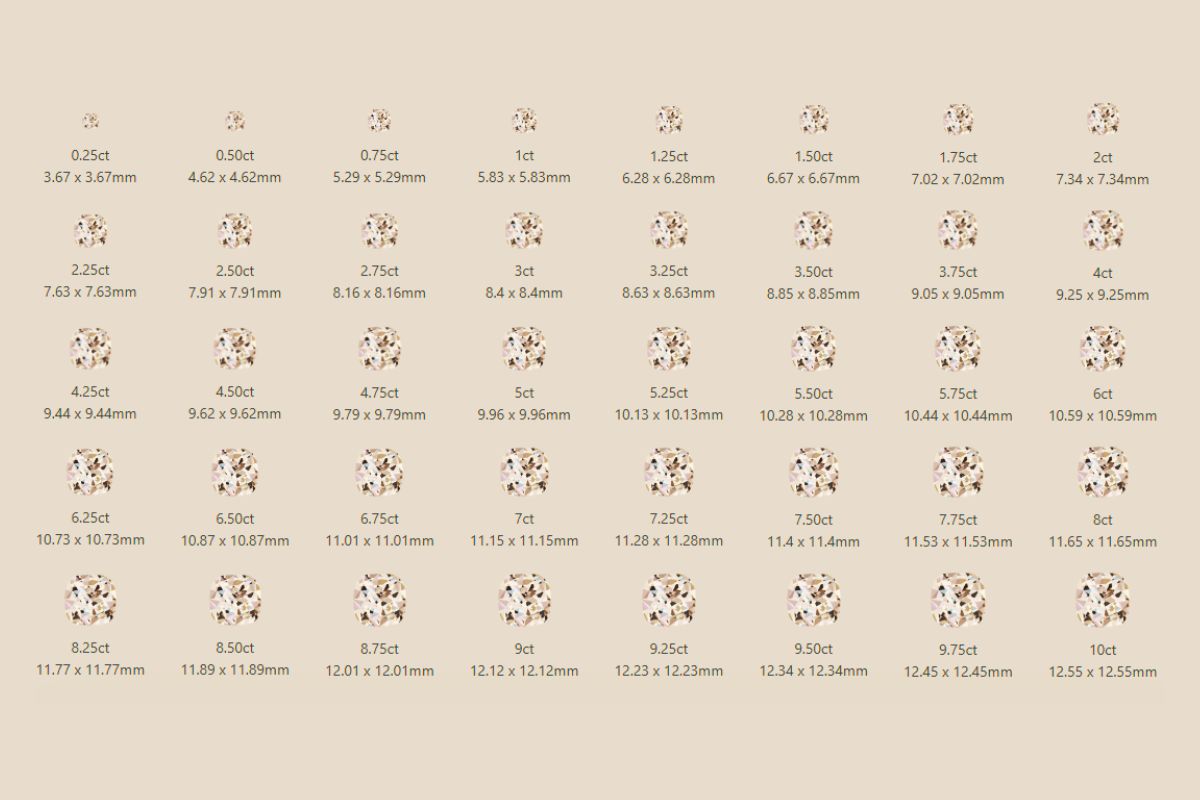
When selecting a cushion cut diamond for an engagement ring, I consider both its charm and variant cut styles. I aim for a brilliant harmony between size, color, and clarity, ensuring the diamond's quality and beauty align with my personal style and budget.
Understanding the Importance of Carat Weight
I always emphasize that carat weight, a measure of a diamond's weight and size, significantly informs my choice. In the context of cushion cuts, a higher carat weight often equates to a more pronounced display of the diamond's brilliance and size. However, considering the cut style is crucial; a cushion brilliant or a cushion modified can significantly differ in appearance even if they share the same carat weight.
Comparing the cushion brilliant with the cushion modified, I note that:
- Cushion brilliants are more traditional, with soft, rounded edges.
- Cushion modified brilliant diamonds may have extra faceting patterns, often less expensive due to less demand.
Choosing between the two, I balance the carat weight and my budget, bearing in mind that the cushion modified may offer a larger look for the same carat weight due to its cutting style saving more rough diamond during the cutting process.
Influence of Color and Clarity on Selection
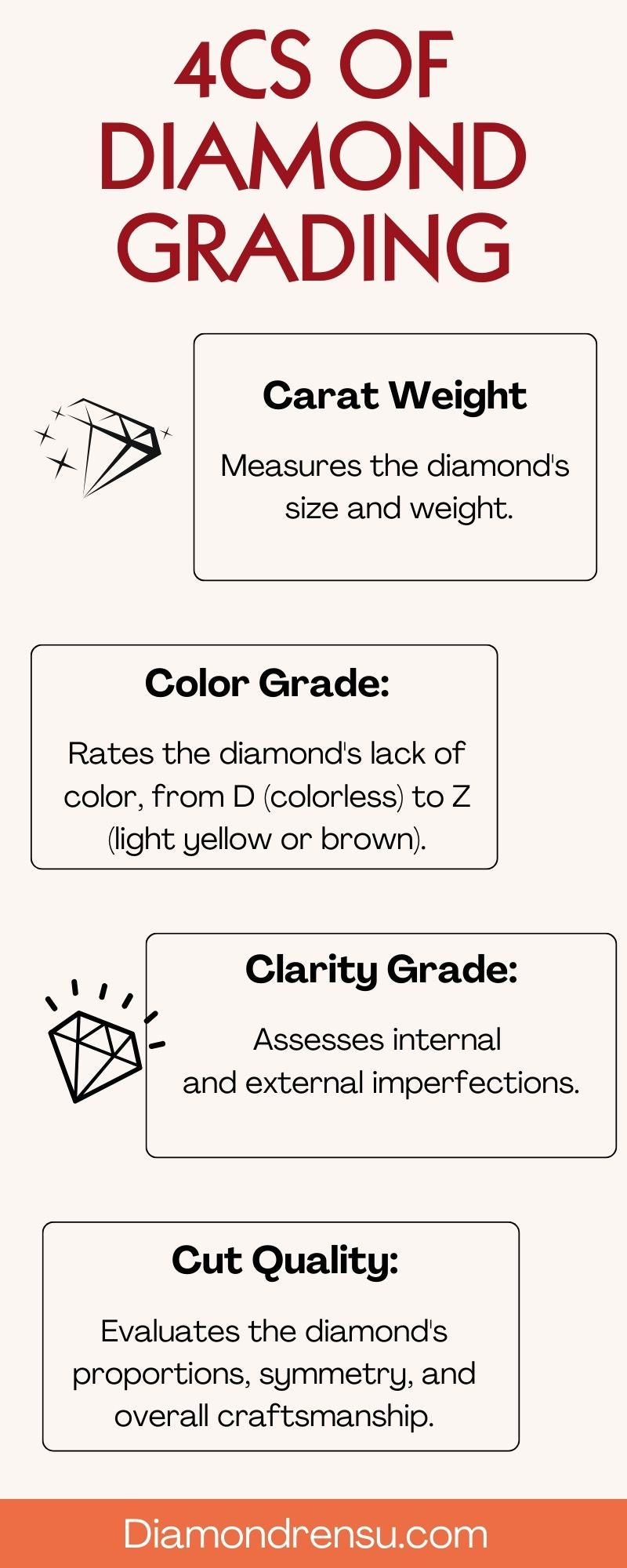
Selecting the right color and clarity for a cushion cut diamond is a delicate balancing act. I follow the 4 Cs:
-
Color: The grade can range from D (colorless) to Z (light yellow or brown). For cushion cuts, slight color can be masked effectively by the right setting, like a halo, which can make near-colorless grades appear brighter.
-
Clarity: This grade assesses the number, size, position, brightness, and color of inclusions and blemishes. While I prefer a diamond with fewer inclusions, some characteristics can be hidden by a cushion cut's faceting pattern, especially in a modified cut, which can disperse light in a way that masks inclusions.
I always seek a certification from a respected grading entity to ensure an accurate assessment of these qualities. My engagement ring purchase becomes an echo of my understanding of the balance between carat, color, and clarity within the backdrop of my personal style and the diamond’s setting style.
Popularity and Cultural Significance
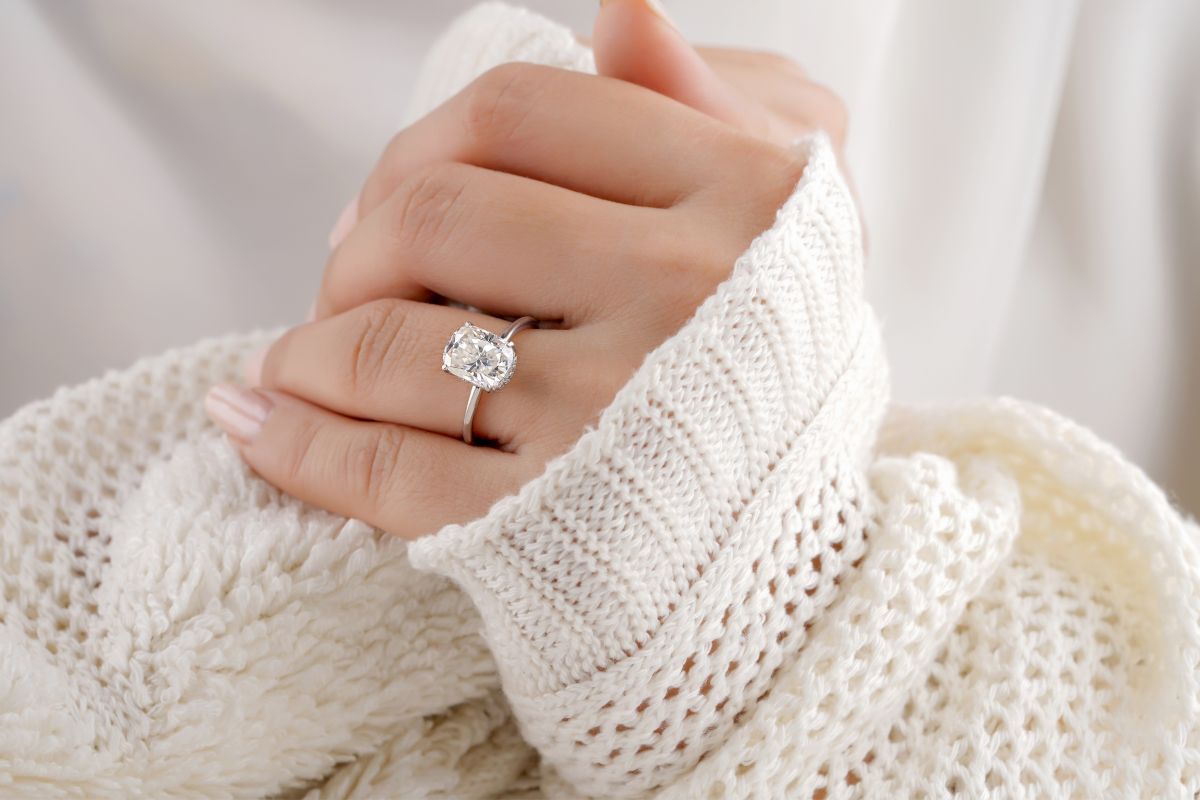
In my exploration of cushion cut diamonds, I have observed that their popularity is significantly influenced by trends and celebrity endorsements. These factors often dictate the demand for cushion brilliant versus cushion modified brilliant cuts.
Trends in Demand for Cushion Cuts
The cushion cut has enjoyed a resurgence in popularity as a classic yet modern choice for engagement rings. Its soft, rounded corners and historical charm have appealed to those seeking both tradition and elegance. While the cushion brilliant offers a timeless look with its larger facets and fiery appearance, the cushion modified brilliant—often recognized for its "crushed ice" look—has become increasingly popular for its unique sparkle.
Celebrity Influence on Cushion Cut Choices
Celebrities often play a pivotal role in determining popular styles. For instance, Kim Kardashian's choice of a 15-carat cushion brilliant cut engagement ring escalated its demand among those seeking to emulate her opulent taste. Leighton Meester's engagement ring, a cushion cut diamond, further underscores the preference among stars for this particular style, blending tradition with contemporary sophistication. The celebrity endorsements underscore the timeless appeal of both cushion brilliant and cushion modified brilliant cuts.
Purchasing Considerations for Cushion Diamonds
When you're in the market for a cushion diamond, it's crucial to understand how cost and the specifics of the cut influence the price. This knowledge ensures you make an informed decision that aligns with both your aesthetic preferences and budget.
Evaluating Cost Factors and Affordability
The cost of cushion diamonds can vary widely, influenced by a range of factors beyond the classic four C's: carat, color, clarity, and cut. My first focus is on affordability, a critical aspect since cushion diamonds come in diverse price ranges. A loose cushion modified brilliant diamond may be less expensive compared to its brilliant counterpart, due to subtle differences in cutting style. This is particularly evident when comparing two diamonds of similar carat weight and clarity.
Factors influencing cost:
- Carat Weight: Generally, the larger the diamond, the higher the price.
- Cut Style: A cushion modified brilliant typically costs less than a cushion brilliant.
- Demand: Prices can be affected by the popularity of specific shapes and styles.
Decoding the Impact of Cut on Price
The cut of a diamond not only affects its brilliance but also its price. My aim here is to demystify the pricing behind the cut styles. A cushion brilliant cut follows a similar facet pattern to the round brilliant and is prized for its clarity and sparkle, which often results in a premium price tag. Conversely, the cushion modified brilliant cut, known for a "crushed ice" appearance, has extra facets below the girdle that create a more unique sparkle, and these diamonds can offer better value due to their lower cost relative to cushion brilliants.
Impact of cut on price:
- Cushion Brilliant: Higher price for traditional, crisp sparkle.
- Cushion Modified Brilliant: Offers a unique sparkle akin to "crushed ice" at a potentially lower cost.
Customization and Styling with Cushion Cuts
| Celebrity | Description |
|---|---|
| Blake Lively | The actress and fashion icon is known for her stunning cushion cut diamond engagement ring, featuring a large center stone surrounded by smaller diamonds on a thin band. |
| Sofia Vergara | The "Modern Family" star flaunts a dazzling cushion cut diamond ring from her husband Joe Manganiello. The ring boasts a sizable cushion cut diamond set on a diamond-studded band. |
| Meghan Markle | The Duchess of Sussex received a timeless cushion cut diamond engagement ring from Prince Harry. The ring features a center stone sourced from Botswana, flanked by smaller diamonds from Princess Diana's personal collection. |
| Jennifer Aniston | The "Friends" actress sports a classic cushion cut diamond ring from her now ex-husband Justin Theroux. The ring showcases a radiant cushion cut diamond set in a simple, elegant setting. |
When discussing customization and styling, cushion cuts offer an intriguing blend of old-world charm and modern design flexibility. My focus is on the distinct variations and how they adapt to different jewelry settings.
Modern Variations and Hybrid Designs
The cushion cut diamond has evolved from its classical form to integrate a mix of features that cater to contemporary tastes. A prominent modern variation is the hybrid cushion brilliant which fuses the pillow-like outline of the traditional cushion cut with the intricate faceting patterns of the brilliant cut diamond. The result is a stone with a modern look that maintains a nod to vintage appeal.
Hybrid designs also incorporate elements from other cuts, such as the radiant cut, to create a new standard for sparkle and shape. Antique cushion variations, reminiscent of the miner cut, are revered for their classic aesthetic, whereas the modern variants strive for a heightened brilliance more aligned with current preferences.
Cushion Cuts in Different Jewelry Settings
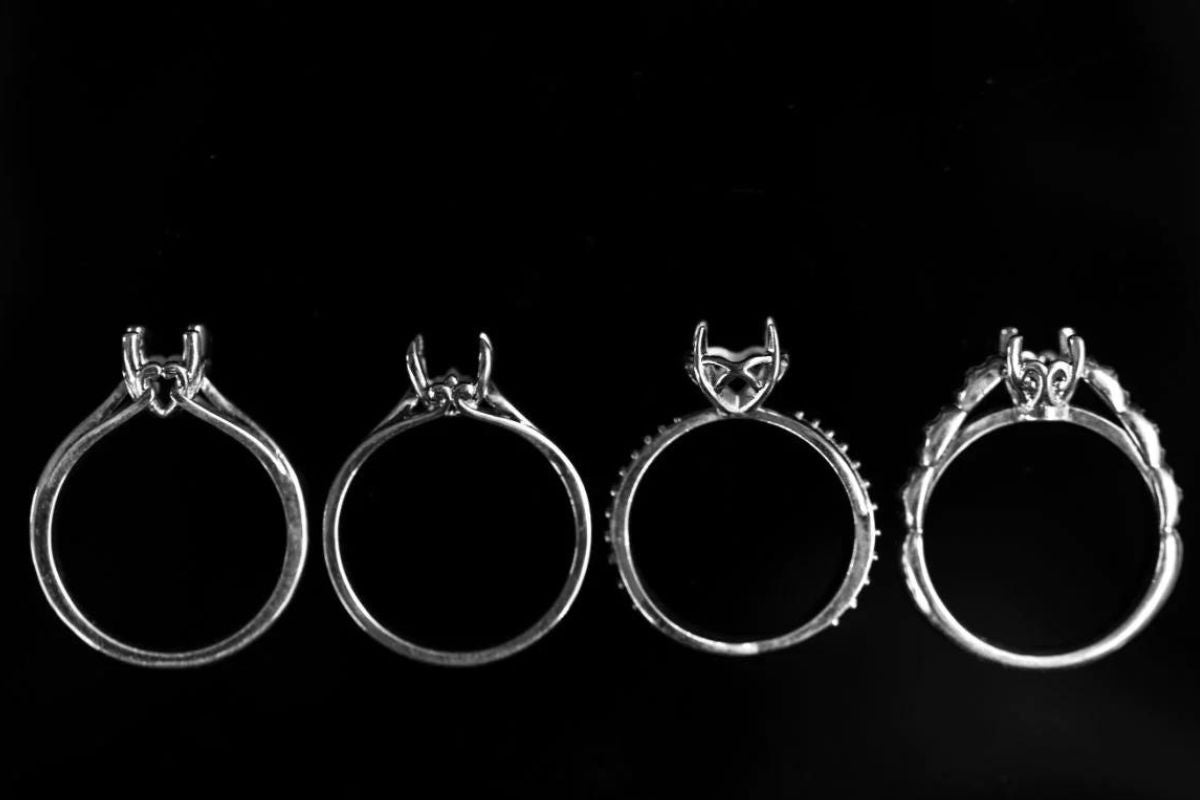
Cushion cut diamonds are versatile and adapt well to diverse setting styles, from modest solitaires to elaborate halos. Here are a few common settings:
- Solitaire: Allows the distinctive shape and faceting of the cushion cut to stand alone and shine.
- Halo: Amplifies size and brilliance; especially popular with the cushion modified brilliant, which may have extra facets for intense sparkle.
- Bezel: Offers a sleek, modern casing for the diamond and is a perfect match for the contemporary hybrid cushion cut.
- Three-Stone: Often combines cushion cuts with other diamond shapes, creating a stunning mix that highlights the central stone's unique characteristics.
In these settings, the variations of cushion cut diamonds — from the clear, star-like patterns of the cushion brilliant to the nuanced light performance of a cushion modified brilliant — provide ample opportunity for personalization and style expression. Whether set in platinum to accentuate a cool, crisp sheen or in rose gold for a warm, vintage vibe, the cushion cut is highly adaptable.
Analyzing Cushion Diamonds for Quality

When I investigate cushion diamonds, my main focus is on their certification and cut standards. These critical aspects significantly affect the stone's quality and acceptance in the market.
Recognizing the Significance of Certification
For any cushion diamond, whether a cushion brilliant or a cushion modified brilliant, I always begin by examining the diamond's certification. The leading laboratories issuing certifications include GIA (Gemological Institute of America), AGS (American Gem Society), and EGL (European Gemological Laboratory). This document serves as an objective testament to the diamond's attributes; it provides a credible blueprint of carat weight, color, clarity, and most importantly for cushion diamonds, cut quality.
Certification establishes a foundation of trust and ensures that the cushion diamond adheres to industry standards. Without this certification, it's challenging to verify the stone's popularity, quality, and true characteristics.
Discussion on Cut Standards and Acceptance
Cushion cut diamonds are lauded for their soft, pillow-like appearance and can display a mesmerizing sparkle reminiscent of sparkling water. The cut of a cushion diamond greatly varies and directly influences its brilliance and beauty.
The cushion brilliant is recognized for its larger facets, while the cushion modified brilliant typically has additional facets. The cut standards for these diamonds focus on proportions, symmetry, and how the facets reflect light. I look for specific ratios in cut standards such as the length to width, which should ideally be between 1-1.05 for a square shape. Acceptance of the cut in terms of popularity hinges on these standards, as they either enhance or detract from the diamond's allure. Variation in facet patterns and lengths affect the light performance and therefore, distinguish the overall aesthetic between a cushion brilliant and a cushion modified brilliant.
A meticulously cut cushion brilliant diamond often fetches higher prices due to its traditional facet pattern, while the cushion modified brilliant may offer a unique look at a more accessible price point. In my professional assessments, I find that adherence to cut standards plays a pivotal role in a cushion diamond's acceptance and demand.
Insights into Personalization and Style
When considering cushion cuts, my personal style and taste are at the forefront of my decisions. I prioritize how the specific attributes of each diamond cut reflect my individuality.
Aligning Cushion Cuts with Personal Taste
I understand that selecting a diamond shape is a reflection of my personal preference. When I examine cushion brilliants and cushion modified brilliants, I focus on how their distinct features resonate with my style. The cushion brilliant, with its soft corners and larger facets that mirror the round brilliant cut, appeals to my appreciation for classic elegance. On the other hand, a cushion modified brilliant, recognized for its extra facets, offers a contemporary twist with a distinctive sparkle pattern.
- Cushion Brilliant: I admire its timeless appeal reminiscent of the round brilliant cut diamond.
- Cushion Modified Brilliant: I am drawn to its modern flair and unique light reflection.
Pros and Cons of Cushion Brilliants vs. Modified
Considering the pros and cons of each style allows me to make an informed choice that suits my personal style.
Cushion Brilliant:
- Pros: It offers a traditional look with a star-like pattern and has a soft, romantic glow.
- Cons: The larger facets can sometimes show color and inclusions more notably.
Cushion Modified Brilliant:
- Pros: This cut often exhibits a "crushed ice" appearance, reflecting light in an alluring, haphazard manner.
- Cons: The modified cut can at times produce less of the classic sparkle associated with a round brilliant.
By comparing the two, I weigh how their aesthetic and the interplay of light cater to my personal style. The decision ultimately comes down to whether I prefer the bold and distinct pattern of the cushion brilliant or the unconventional sparkle of the cushion modified.
The Cushion Cut in a Modern Context
Buy Cushion Cut Lab Grown Diamond Solitaire Engagement Ring
The cushion cut diamond occupies a unique space in today's jewelry landscape, combining old-world charm with modern refinements to meet contemporary aesthetic preferences.
Adapting Antique Designs for Contemporary Tastes
In my experience with diamond craftsmanship, there has been a noticeable revival of antique cuts, tailored for the modern wearer. Antique cushions have evolved into what's known today as modern cushion cuts or modified cushions. These newer designs cater to the demand for diamonds that exude a vintage allure while also delivering the radiant appeal that's desirable in the current market. A modified cushion typically includes an extra row of faceting patterns beneath the diamond girdle, optimizing light reflection and thereby starting to bridge the gap between classic sensibilities and the modern look.
Round Brilliant and Cushion Cut: A Comparative Study
When I compare a round brilliant to a cushion cut, it becomes clear why the former has maintained its status as the go-to for brilliance and fire. The round brilliant cut, perfected by Marcel Tolkowsky in 1919, is renowned for its optimal use of light performance with 58 carefully arranged angles and facets. On the other hand, the cushion cut, with its softened corners and larger facets, offers a different kind of allure that is unique and often rarer to find.
Celebrities often opt for the cushion cut for its distinctive appearance, contributing to its increasing visibility and demand. While the round brilliant remains a classic choice for its unmatched sparkle, the cushion cut's stunning appeal lies in its ability to marry the old with the new, creating a harmonious blend that’s both nostalgic and boldly contemporary.
Conclusion
In examining cushion brilliant and cushion modified brilliant diamonds, I have noted the distinct characteristics that define each cut. Cushion brilliant diamonds are known for their large facets that extend from the center, creating a classic look with a star-like pattern. This resemblance to the round brilliant cut results in broad and vivid flashes of light.
Cushion modified brilliant diamonds, on the other hand, display additional facets below the girdle. These extra facets result in a distinctive sparkle, often described as a "crushed ice" appearance due to its shimmering effect that is less structured compared to the noticeable patterns of a cushion brilliant.
When deciding between the two, potential buyers should consider their personal preference for sparkle and the diamond's overall appearance. Here's a swift comparison:
-
Cushion Brilliant:
- Larger, fewer facets
- Star-like facet pattern
- Broad flashes of light
-
Cushion Modified Brilliant:
- Extra facets
- "Crushed ice" sparkle
- Sharp, short sparkles
I recommend close scrutiny when selecting a diamond, as the interplay of light and personal style preferences greatly influence the choice. The allure of each type of diamond cut is subjective, and taking the time to observe both in different lighting conditions can greatly aid in making an informed decision. Remember to factor in the length-to-width ratio as well, as it affects the stone's proportion and overall shape.
Frequently Asked Questions
In this section, I'll address some common inquiries regarding the differences between cushion brilliant and cushion modified brilliant diamonds, focusing specifically on their appearance, light performance, pricing implications, and identification methods.
How do cushion brilliant and cushion modified brilliant diamonds differ in appearance?
Cushion brilliant diamonds typically exhibit a clear, star-like pattern created by their pavilion facets extending outward from the stone's center. Meanwhile, cushion modified brilliants often have a hallmark "crushed ice" look, which results from additional facets and shorter pavilion mains that create numerous small flashes of light.
In what ways do the cut styles of cushion brilliant and cushion modified influence the diamond's light performance?
The cushion brilliant cut usually provides broad and dispersed light reflections due to its long pavilion facets, resulting in a classic sparkle. On the other hand, cushion modified diamonds tend to display sharper, more numerous sparkles that may not be as broad but are intense, akin to water glistening in the sun.
Can the price of a diamond be affected by choosing between cushion brilliant and cushion modified brilliant cuts?
Yes, the cut can influence a diamond's price. Cushion brilliants may command higher prices because their cutting style can demand a larger rough diamond to maintain carat weight. Cushion modified cuts can sometimes be more economical without compromising visual appeal, as the cut can be tailored to preserve more carat weight from the rough diamond.
What distinguishes a cushion modified brilliant diamond from a traditional cushion cut diamond?
Traditional cushion cut diamonds draw inspiration from older cutting styles with fewer facets and a softer light display. Cushion modified brilliants are a more recent development, where extra facets and altered proportions give them their distinctive "crushed ice" appearance, setting them apart from the classic cushion cut's chunky facets and soft luminescence.
How can one identify the cut of a diamond as either cushion brilliant or cushion modified brilliant?
Identifying the type of cushion cut can be done by examining the diamond's facet structure. Cushion brilliants showcase a clear, symmetrical pattern with long, straight facets, while cushion modified brilliants exhibit a more complex facet arrangement that often leads to the “crushed ice” effect.
What characteristics define a cushion shaped diamond, and how are they categorized?
Cushion shaped diamonds are known for their rounded corners and square to slightly rectangular outlines. They are categorized based on their facet patterns and cutting style, with the primary distinction between the traditional cushion brilliant and the newer cushion modified brilliants being the arrangement and length of the pavilion facets.
Checkout some of our top collections:
Leave a comment
Please note, comments must be approved before they are published.

